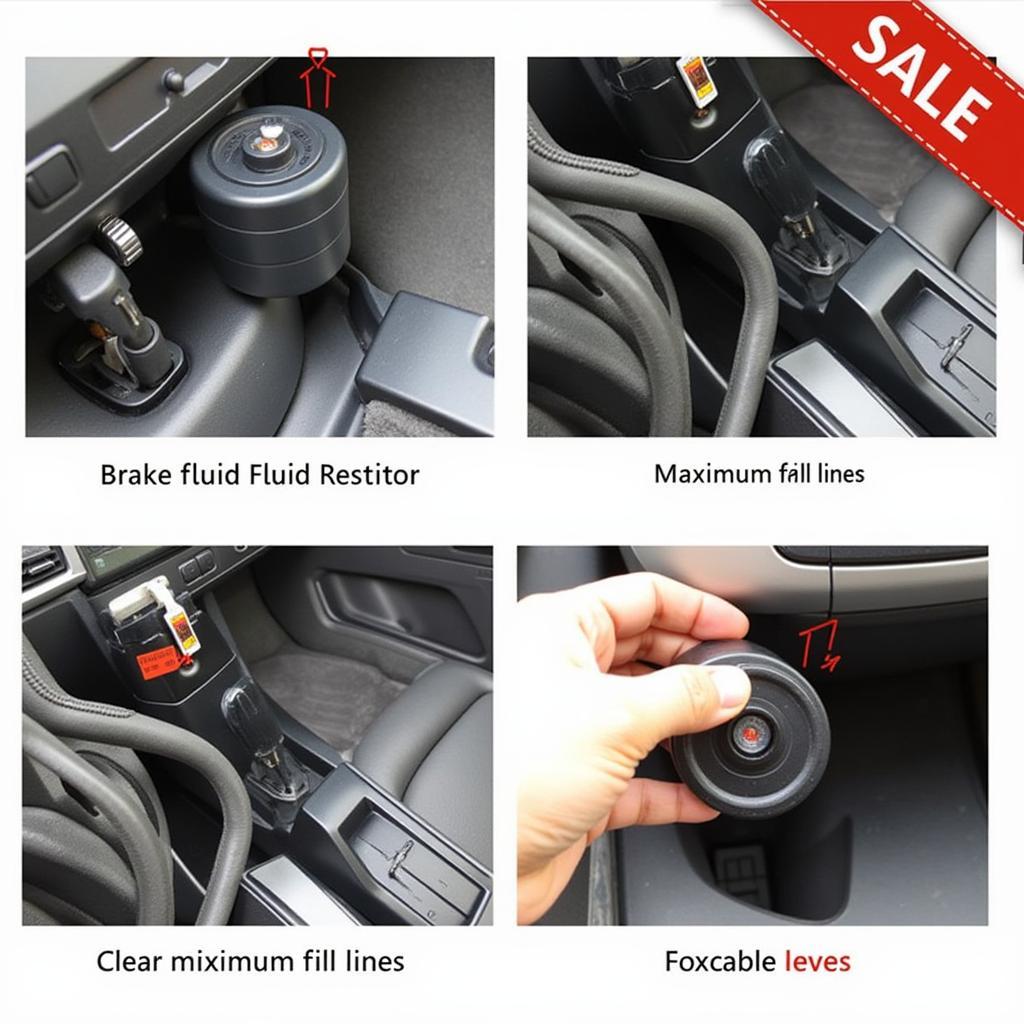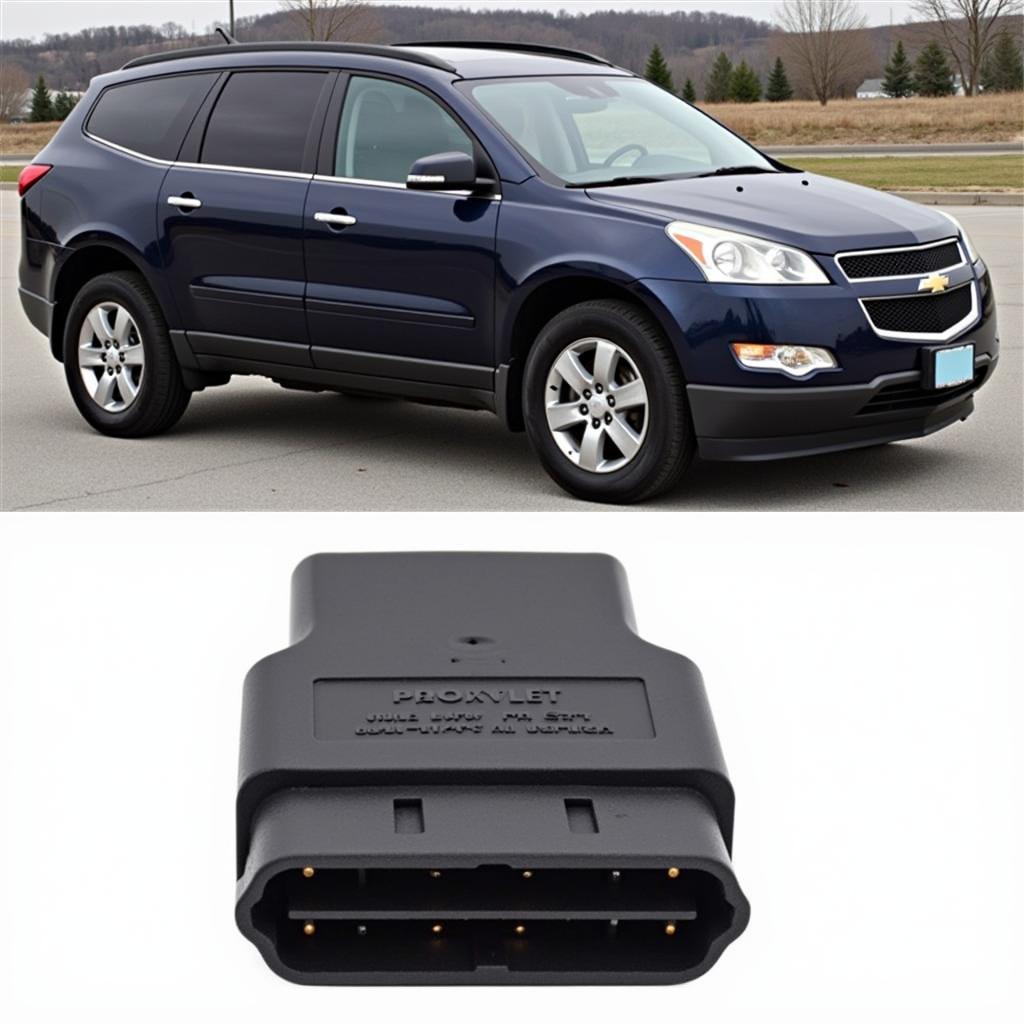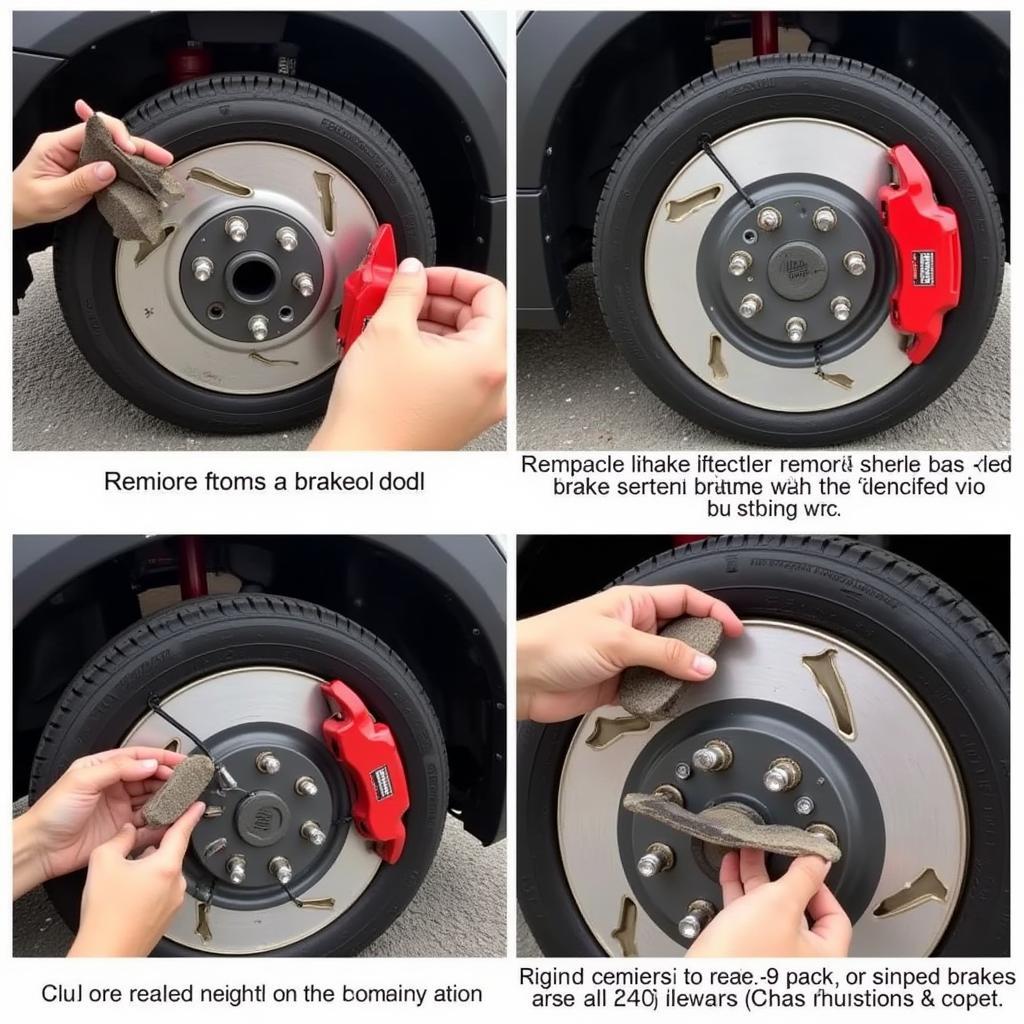The dreaded brake warning light on your 2009 Chevy Traverse can be a source of anxiety. This article will help you understand why your 2009 chevy traverse brake warning light is on, providing troubleshooting tips, potential solutions, and advice on when professional help is needed. We’ll cover everything from simple checks you can do yourself to more complex issues that require a technician’s expertise, focusing on remote diagnostics, programming, and software installation as potential solutions.
Understanding Your 2009 Chevy Traverse Brake System
The braking system in your 2009 Chevy Traverse is a complex network of components working together to ensure safe and reliable stopping power. Understanding the basics can help you pinpoint the cause of the warning light. The system includes the master cylinder, brake lines, calipers, rotors, brake pads, and various sensors, including the brake fluid level sensor and wheel speed sensors, which are crucial for the Anti-lock Braking System (ABS). These components are all interconnected and can influence the brake warning light.
Common Causes of the Brake Warning Light
Several issues can trigger the brake warning light in your 2009 Chevy Traverse. Low brake fluid is a common culprit. A leak in the brake lines, worn brake pads, or a failing master cylinder can all contribute to low fluid levels. A faulty brake fluid level sensor can also trigger the light, even if the fluid level is adequate.
Another potential cause is a problem with the ABS. A malfunctioning wheel speed sensor, a damaged ABS module, or a wiring issue within the ABS system can illuminate the warning light. Issues with the parking brake can also be a factor, including a faulty parking brake switch or a cable that’s out of adjustment.
 2009 Chevy Traverse Brake Fluid Reservoir – Checking the Brake Fluid Level
2009 Chevy Traverse Brake Fluid Reservoir – Checking the Brake Fluid Level
Diagnosing the Problem
Start with the simplest checks first. Check your brake fluid level. If it’s low, top it off and monitor it closely. If the level drops quickly, you likely have a leak. Inspect your brake pads for wear. If they are thin, they need replacing. These checks can often be performed at home.
If these simple checks don’t reveal the problem, more advanced diagnostics are required. This is where remote diagnostics and software solutions come into play. Modern vehicles like the 2009 Chevy Traverse rely heavily on software and electronic control units (ECUs). Remote diagnostics can access these systems, pinpoint the issue, and even reprogram or update software to fix certain problems.
Remote Diagnostics and Software Solutions
Remote diagnostics involve connecting your vehicle’s onboard diagnostic system to a specialized computer, often through the OBD-II port. A trained technician can then access real-time data from the vehicle’s various sensors and systems, including the ABS and braking system. This allows for a more precise diagnosis than traditional methods.
Furthermore, software updates and reprogramming can often address issues without the need for physical repairs. For instance, a software glitch in the ABS module might be causing the warning light. A remote technician can install a software patch to rectify the issue quickly and efficiently.
“Remote diagnostics is becoming increasingly important in the automotive industry,” says John Miller, a senior automotive diagnostic specialist. “It allows us to quickly and accurately diagnose complex issues, saving time and money for the customer.”
When to Seek Professional Help
While some brake warning light issues can be addressed with simple DIY fixes, others require professional attention. If you’ve checked the fluid level and brake pads and the light persists, it’s time to consult a qualified technician. If you suspect a problem with the ABS, remote diagnostics and software solutions can be highly effective.
 Locating the OBD-II Port on a 2009 Chevy Traverse
Locating the OBD-II Port on a 2009 Chevy Traverse
“Addressing brake issues promptly is crucial for safety,” adds Susan Davis, a certified automotive technician. “Don’t ignore the warning light. Even seemingly minor problems can escalate into major safety concerns if left unattended.”
Conclusion
Addressing the 2009 chevy traverse brake warning light quickly is essential. By understanding the potential causes and utilizing resources like remote diagnostics and software solutions, you can resolve the issue efficiently and ensure your vehicle’s safety. Remember, prioritizing safety is paramount when it comes to brake issues. Don’t hesitate to consult a professional if you encounter a problem beyond your expertise.
FAQ
-
What should I do if my 2009 Chevy Traverse brake warning light comes on?
Check your brake fluid and brake pads first. If those seem okay, consult a professional. -
Can low brake fluid cause the brake warning light to come on?
Yes, low brake fluid is a common cause. -
What are some other reasons the brake warning light might illuminate?
Problems with the ABS, parking brake, or brake sensors can also trigger the light. -
What are remote diagnostics?
Remote diagnostics allow a technician to access your car’s computer systems remotely to diagnose problems. -
Can software updates fix brake problems?
Yes, software updates can sometimes fix issues with the ABS module or other electronic components. -
When should I seek professional help for my brake warning light?
If simple checks don’t resolve the issue, consult a technician. -
Is it safe to drive with the brake warning light on?
No, it’s not safe. Address the issue immediately.

